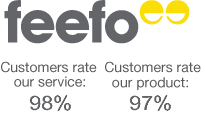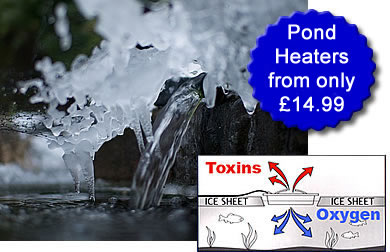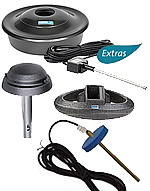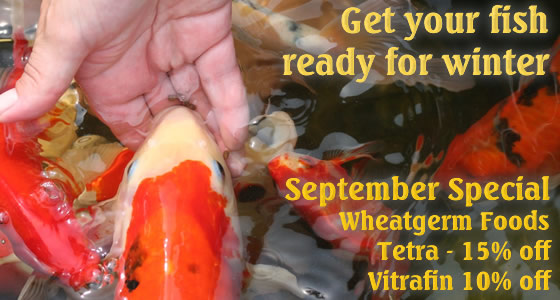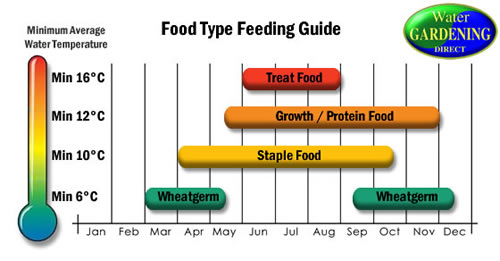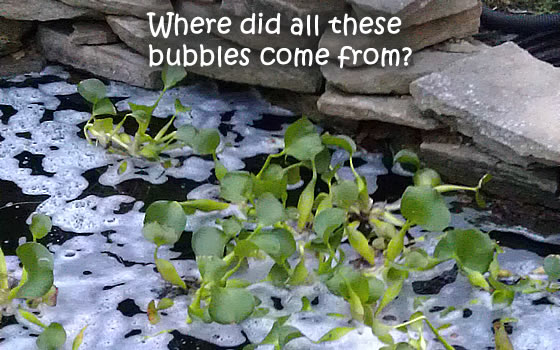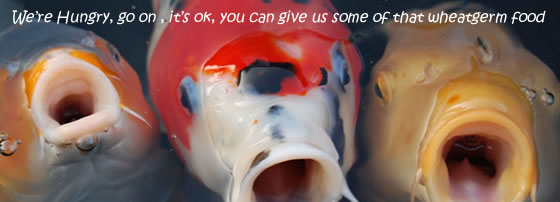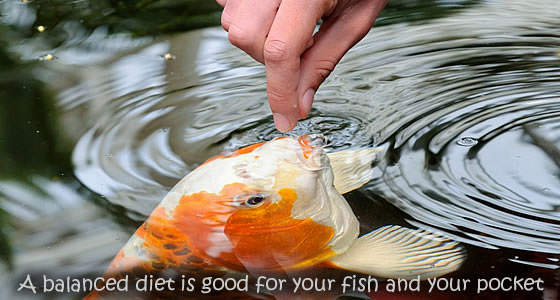
How And When To Feed Your Fish
Fish have evolved over the years to extract the appropriate nutrition from the food they eat. Commercial foods have been designed to offer what they need when they need it. During the cooler temperatures fish do not absorb as much Protein, so Wheatgerm Fish Food has been developed to meet these demands, it is low in Protein, but higher in other nutrients. In the warm summer months, fish want to take on as much protein as they can, either for body growth or to help create eggs and so Growth Foods are available which are high in Protein. The table below offers a guide to which food type is best for the time of year or temperature. Knowing how and when to feed your fish is both good for your fish and your pocket.
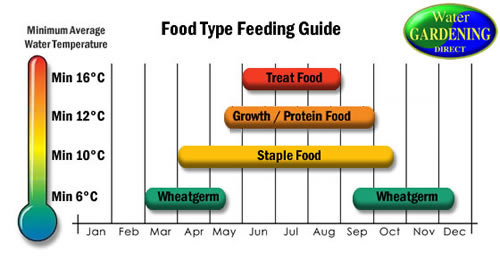
Summer Feeding
During the Summer months your fish can seem to be ravenous and feeding them multiple handfuls of food, which they wolf down is very tempting, but this is not necessarily a good thing for them, the pond or your wallet. If you feed the fish a lot in one go, they will get full and the food will pass through their body quickly leading to much of the food coming out as waste. This will pollute the pond leading to foaming (protein froth), filters which need cleaning more frequently, added nutrients for algae and over weight lazy fish. In the wild your pond fish would naturally look for food all the time and would eat little and often, so this is what we should try to help them do. Feeding small quantities of food which can be consumed in 5 minutes only is ideal, this can be done as often as your lifestyle allows, but if you want to promote growth the more frequent the better. By feeding in this way, not only do you ensure that most of the goodness of the food is used, but also it keeps the fish slightly hungry and they will explore round the pond looking for more food, this is good for muscle growth and general health. You will also probably spend less on food.
Using the little and often option for feeding will soon lead to your fish coming to you when you approach the pond. This is ideal, it allows you to appreciate them better, to visually inspect them to ensure they are all healthy and can be the beginning of being able to hand feed them.
One of the problems with feeding fish in a well planted pond is that the food can float off in to the marginal plants making it hard to know if it has been eaten or is just rotting away. This can be avoided by using a feeding ring, this is a very simple floating ring which keeps the food in one place, so that you know what is being consumed.
Click here to go to our Feeding Rings Page
Keeping an eye on things
One food to stay away from, or at least be very careful of, is flake food. Around 50% of flake food sinks, which is fine in aquariums, but in ponds it can mean that you do not know how much is being eaten and can lead to a rotting pile at the bottom of the pond.
In short the best thing for your fish is to feed them the correct kind of food for the temperature/season and do this little and often.
